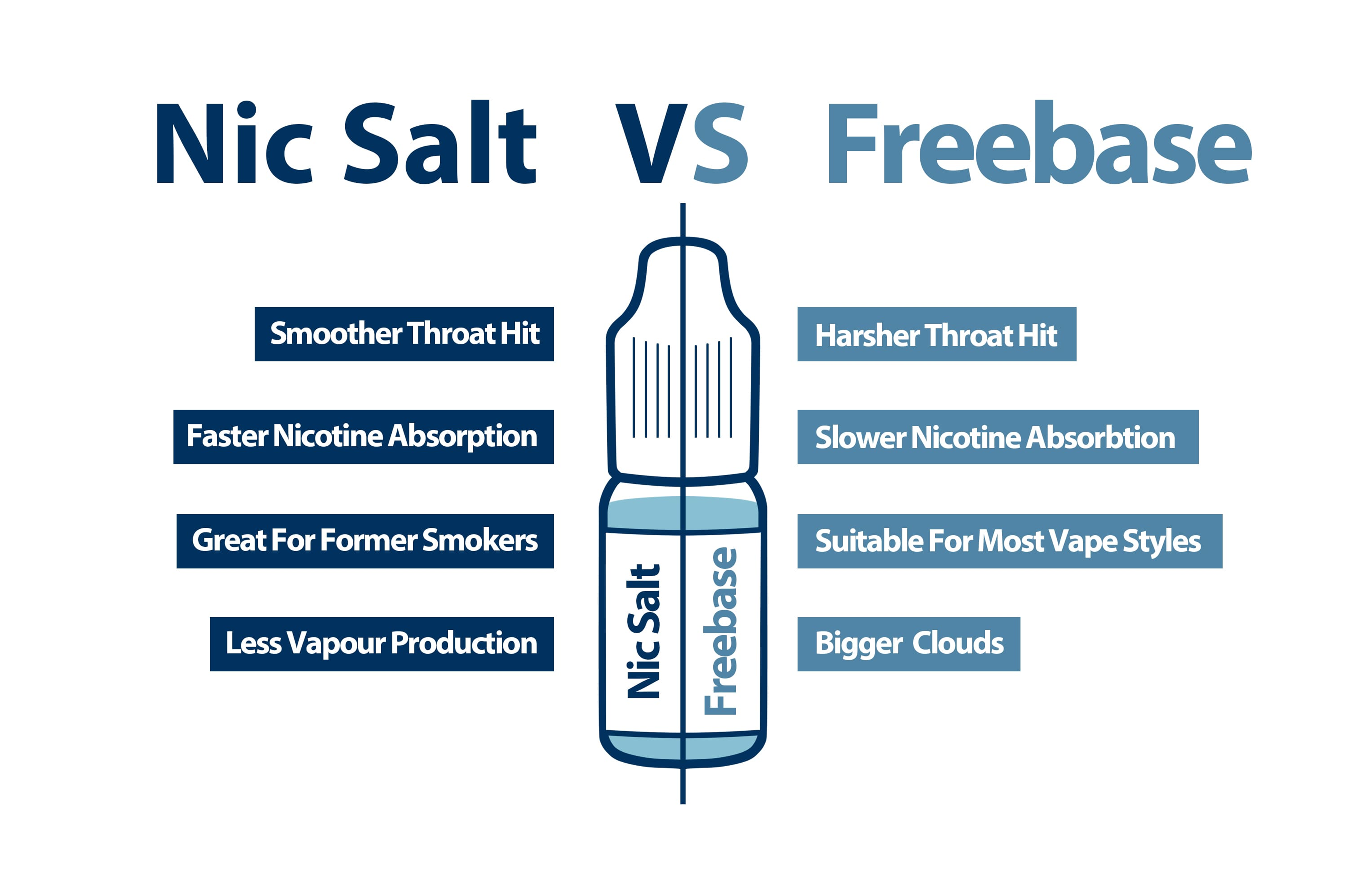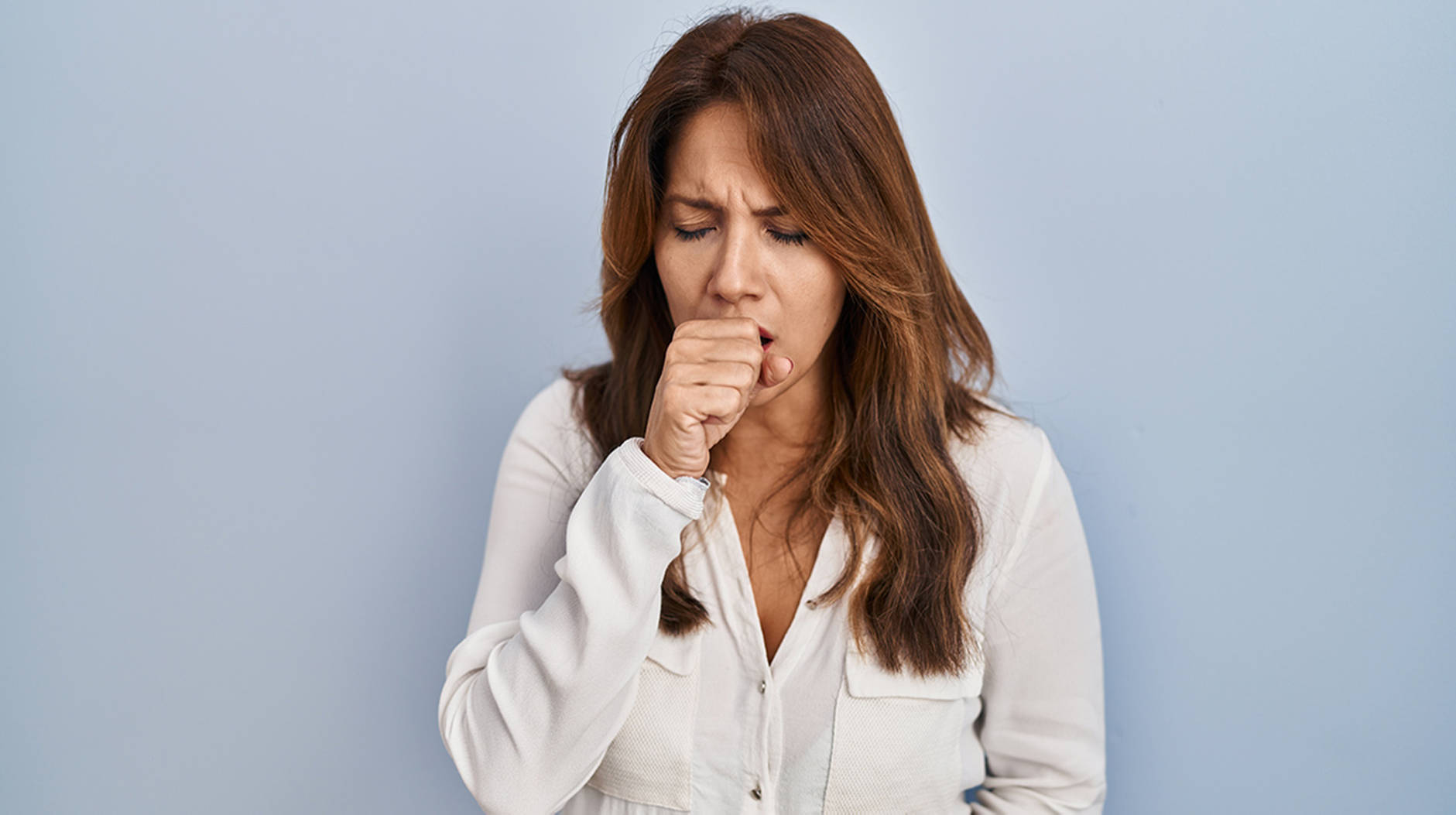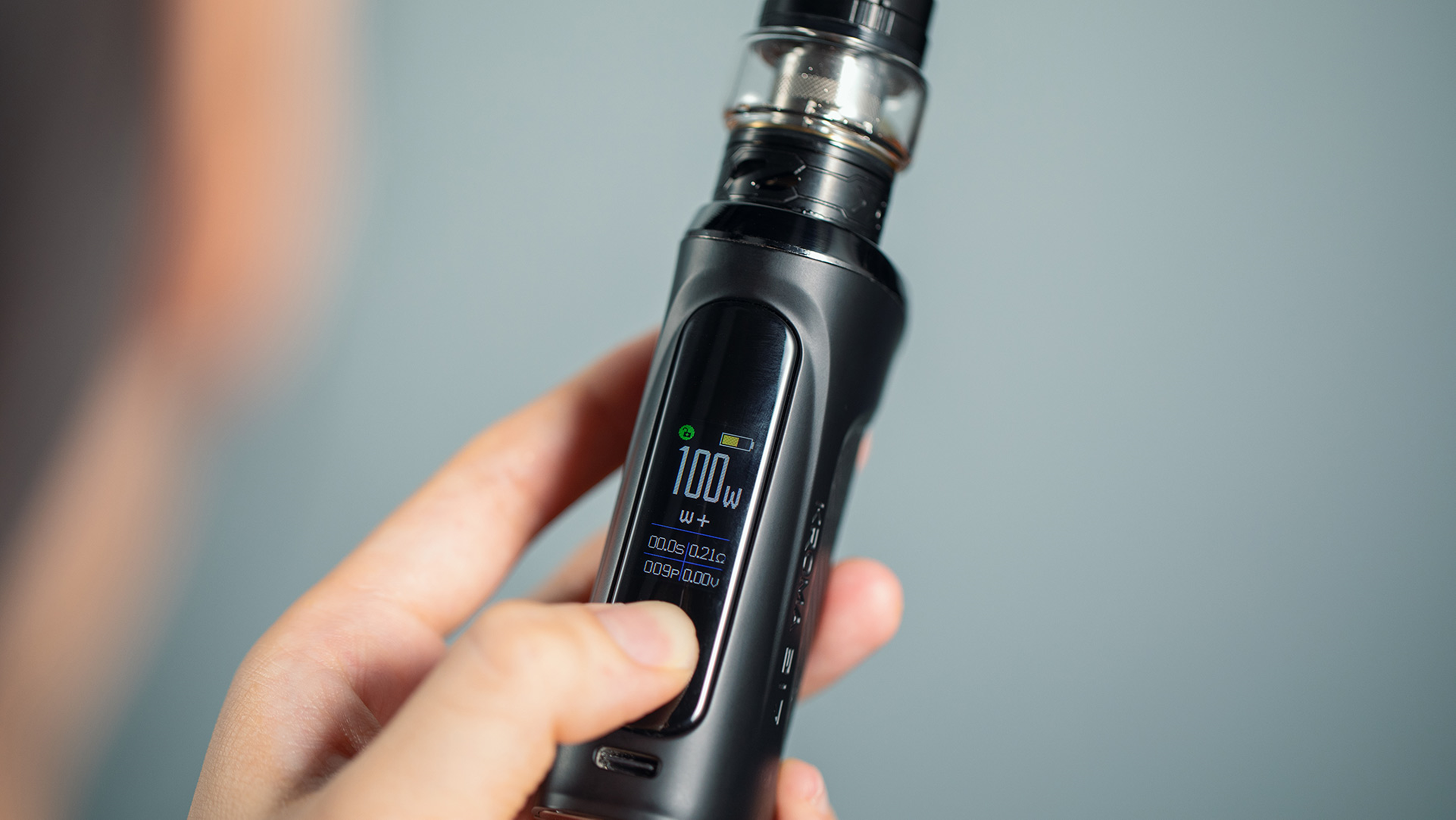Coughing or Sore Throat from Vaping? Here’s What to Do
Your Nicotine Strength Is Too High
In order for you to enjoy vaping to the fullest possible extent, it is absolutely crucial for the nicotine strength of your e-liquid to be right for your needs. If your nicotine strength is too low, you won’t find vaping satisfying – but you can easily rectify that by vaping more often or by switching to a higher nicotine strength. If your nicotine strength is too high, though, you may not be able to vape at all because you’ll cough or experience a sore throat when you try to inhale the vapor. Does vaping cause you to experience a throat hit that’s even more intense than what you feel when smoking a cigarette? It’s very likely that your nicotine strength is too high. Learn more about how to choose the right e-liquid nicotine strength.

You’re Using the Wrong Type of Nicotine

You’re Using the Wrong VG/PG Ratio for Your Needs
Vegetable glycerin (VG) and propylene glycol (PG) are the two bases that are used to make e-liquid. In a typical bottle of vape juice, only about 10-15 percent of the contents are flavors and nicotine. The rest is a blend of VG and PG. VG and PG have different properties. VG tends to produce bigger vapor clouds, for instance, while PG is a better carrier of flavors.
Because VG and PG both have desirable characteristics, e-liquid tends to contain a blend of both. PG does have one characteristic, however, that some people don’t enjoy: it tends to create a slightly scratchy sensation in the throat. Some people interpret that sensation as a satisfying throat hit. Others, though, interpret it as throat soreness. If you fall into the second group, you should consider trying an e-liquid with a higher percentage of VG. It’s even possible to find e-liquids containing no PG at all.

Your Vape Cough Could Be a Side Effect of Quitting Smoking

You Aren’t Using the Ideal Inhaling Style for Your Vaping Device
One of the most important things to know when you shop for your first vape kit is that a vaping device can be designed for either mouth-to-lung or direct-to-lung inhaling. When you look at the devices that we manufacture here at Levipo, you’ll notice that our product descriptions always explain what the devices’ intended inhaling styles are. That way, you’ll be certain that the device you ultimately end up buying will be perfect for you.
Let’s suppose, though, that you bought your first vaping device without first confirming its intended inhaling style. In that case, you could find that vaping makes you cough because your device’s airflow characteristics aren’t appropriate for your preferred inhaling style. Your best option is to buy a vaping device that’s designed for the inhaling style you want. Until then, though, you can also try adjusting your current device’s airflow to make it tighter or looser.

You Aren’t Drinking Enough Water When You Vape
One of the characteristics that vegetable glycerin and propylene glycol share is that they’re both humectants – they attract and trap moisture. Because VG and PG have that property, some people find that vaping sometimes tends to make them feel dehydrated. Dehydration, of course, can cause you to experience a sore throat when vaping. If you experience other symptoms of dehydration when vaping – such as a dry mouth or chapped lips – there’s a good chance that you’re not getting as much liquid as you require. Luckily, there’s an easy way to fix that: Make a concerted effort to drink more water during your vaping sessions.
Your Device’s Power Level Is Set Too High
The final reason why vaping might give you a sore throat or make you cough is that your device’s power level is set too high. Having a vape mod with adjustable power is a great thing if you’re an advanced vaper because it gives you the ability to customize your vaping experience and enjoy exactly the warmth and intensity that you want. The negative aspect of using a vaping device with adjustable wattage, though, is that it’s possible to set the wattage too high.
Every vape coil has a suggested power range in watts etched into the side of its casing. You’ll also find the suggested wattage range for a vape coil in its box. Manufacturers test the coils for their vape tanks to determine the power ranges in which they can operate reliably. Although you might be tempted to operate your vape tank at a higher than its recommended power range in order to get the biggest vapor clouds possible, the fact is that you’re likely to burn your coil’s wick if you’re too aggressive with your power settings. A burnt vape coil doesn’t just give you poor flavor quality; it’s also very likely to give you a sore throat. Always make sure that your vape mod is set to a power level within your coil’s suggested wattage range.

You Might Be Allergic or Sensitive to Propylene Glycol
Although it isn’t common, there are some people who are allergic or sensitive to propylene glycol (PG). That can potentially be a problem since PG is one of the most prevalent ingredients in vape juice. If you have a PG allergy or sensitivity, you might experience coughing or a sore throat when you vape.
Some people with PG allergies also experience topical symptoms such as redness and itching when coming into contact with PG. If you experience any of these symptoms around your mouth, it’s a potential sign that you should consider changing your e-liquid.
The good news about PG allergies is that they aren’t common. PG is used in an enormous variety of products that most people consume or apply to their skin every day. Some of the products that commonly include PG include deodorants, haircare products, cosmetics, shelf-stable foods and drinks, eyedrops, air fresheners and more. Because PG is so prevalent in consumer products, there’s a good chance that you would already know if you were allergic to it.
If you think that you might be allergic or sensitive to PG, you should consider switching to an e-liquid that uses only vegetable glycerin (VG) as a base and contains no PG. Learn more about PG vs. VG.
When you shop for a VG-based vape juice, it’s important to remember that the terms “Max VG” and “100% VG” are not the same. A Max VG e-liquid contains a high percentage of VG but may still contain some PG for compatibility with smaller vaping devices or because the e-liquid uses PG-based flavorings. Look for an e-liquid with “100% VG” on the label if you want to avoid consuming even small amounts of PG.
You Might Be Using an Old Coil or Pod
It’s important to remember that the way you vape isn’t the only thing that can contribute to coughing or a sore throat; the condition of your equipment is equally important. Every vape coil has a finite life, and a coil eventually burns out and must be replaced.
How long a vape coil lasts depends partially on how you vape, and the type of e-liquid that you use also affects a coil’s life.
These are the three factors that can lengthen or shorten a coil’s life.
- How much e-liquid you use. Pod systems don’t use as much e-liquid as vape mods, so their coils tend to last longer.
- What type of e-liquid you use. Sweetened e-liquid contains sucralose, which creates a residue that covers the coil’s heating surface and creates a burnt flavor.
- Your vaping wattage. If you use a vape mod that operates at a very high wattage, your coils will burn out more quickly.
On average, a vape coil lasts a few days before it requires replacement, although you may begin to taste a burnt flavor sooner than that if you have a powerful vape mod and use very sweet e-liquid. A vape coil that’s badly burnt can cause throat irritation, so replace your coil or pod right away when the flavor quality begins to suffer.
 USD
USD





